What a stunner! Looking a bit like a contemporary Maserati (for good reason, which we’ll get to in a minute), this 1965 Lancia Flaminia GTL could end up being a bit of a bargain Italian exotic, depending on where the reserve ends up. It hasn’t been met yet with bids up to $16,000, but even at twice that this lovely and very original coupe would be well bought. Find it here on eBay out of Englewood, Colorado.
The Flaminia holds a very special place in my heart, as the four-door version, the Flaminia Berlina, easily ranks as the most exotic car anyone in my family has ever owned. That stately Italian served my grandparents as their family car in the mid-’60s, although my mom remembers wishing that her parents could just be normal and have a Country Squire like everyone else. She also remembers, at age nine, being one of a group of little girls and their mother pushing the disabled (and none too small) Lancia across the intersection of Hollywood and Vine while their father stayed in the car to steer! But I digress. There were eight distinct Flaminia variants, each of them designed by a famous Italian carrozzeria. Interestingly, the Pininfarina-designed, factory-built Berlina was not the most popular version; that honor belongs to the Pininfarina-designed and -built coupe. At the other end of the spectrum, the Touring-bodied GTL is one of the rarest, with only about 300 built.
Touring, of course, also designed Maserati’s 3500GT of the 1950s and ’60s, to which the Lancia bears a striking resemblance. With so few cars built—and hand-finished, at that—it’s fortunate that this one is so perfectly unblemished. The Grigio Montebello paint is original, too, preserved in the mild climates of Northern California and New Mexico despite being off the road since the early 1990s.
Lancias, especially those designed before Fiat took over in 1969, are known for their innovative engineering. Underneath this Flaminia we can see its rear transaxle; just outside the frame of this photo are the inboard-mounted rear disc brakes.
Under the hood is a triple-carbureted, uprated 2.8-liter version of the Lancia V6, the first engine ever mass-produced in that configuration. This ultimate version of the V6 was good for a healthy 152 horsepower, while Touring’s Superleggera construction kept curb weight down to 3,131 pounds—300 fewer than the Berlina. Despite the long hiatus, this coupe should be mechanically ready to roll, having recently benefitted from a shocking $28,000 in recommissioning. This included a complete fuel system rebuild, an overhaul of the braking systems, a cooling system refresh, and even a new, custom-fabricated battery tray to replace one that had rusted.
The leather interior is surprisingly nice, too, with no tears or major discoloration evident on the upholstery, although the headliner, likely wool, does show some stains. A good cleaning and conditioning and a restuffing, and these seats could look very good—if not exactly roomy for four! This is what a real 2+2 looks like. The little notch in the edge of the driver’s seat to make room for the shifter is a funky touch.
I can’t say enough about how neat I think this car is—and at a price anywhere near the current bid it’d be a steal, although I suspect the reserve is still quite a ways off. I can dream, though. Let’s hop in and live la dolce vita….
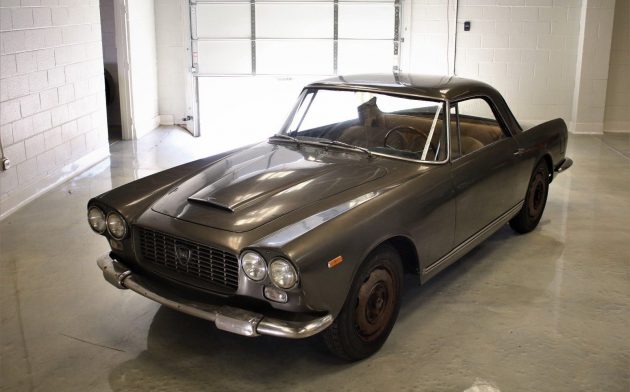
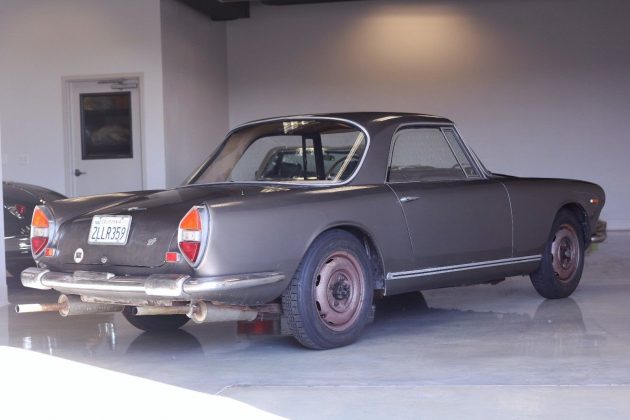

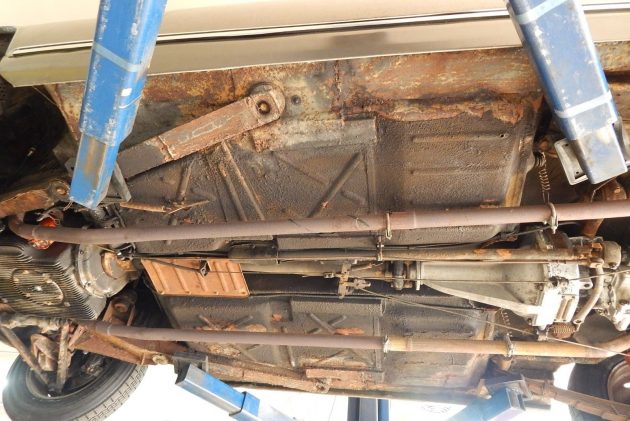
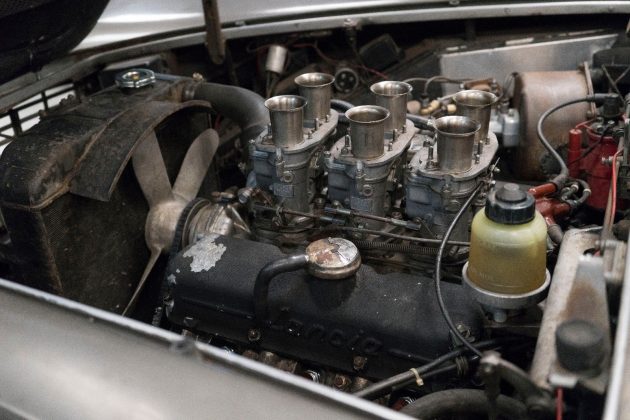
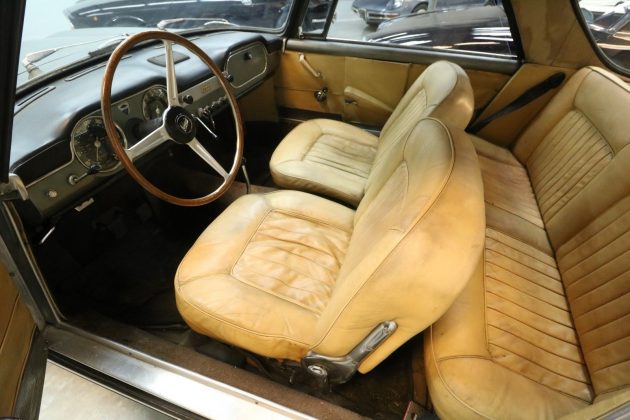




This is nice!
Thank you for featuring this nice Lancia here, as there are some similar cars in my area; Flavia Zagato, Appia, Monte Carlo, Moretti Sportiva. I appreciate the diversity of cars and other things you feature. In the car business we used to say there’s a rear for every seat, so keep finding them!
This is one of the most advanced and interesting small sporting sedans of the ’60s, with the first production V6 engine, which was very advanced for its day, having appeared in the earlier Aurelia in 1950.
It was a 60 degree V design, and the general plan of a V6 was used later on by many other manufacturers. Often in US cars the engines were 90 degrees between the banks so the same tooling that was used for making V8s could also be used to make smaller V6s when the gas crunch came along. The Lancia 60 degree design made the engine smaller and lighter, and also allowed it to run smoother than 90 degree versions, which was important for a sporting Italian car.
These Lancia V6s were aluminum, and sometimes had special carburetion when installed in the sporting models. Design direction at Lancia at the time was by the great Italian designer Vittorio Jano, who sometimes was credited for the Lancia V6, but engineer Francesco De Virgilio handled the details of the design and now is given credit for making it happen. I did a story on all this for ‘Automobile Quarterly’ back a few decades ago, and had the great benefit of some very knowledgeable contacts in the Lancia Club in Italy. Unfortunately, de Virgilio didn’t live long enough to see the story in print.
This car generally looks pretty good. It has CA plates, which might suggest that it led a fairly sheltered life. But it’s in CO now, and there’s what looks like surface rust on parts of the underside, so as usual a close inspection is advisable since these and other cars of that era were really designed to be run in sunny Italy.
That triple Weber carb setup looks terrific. It should, since it’s the same basic engine that was installed in the great Aurelia B24S.
The SCM Guide doesn’t list this particular Lancia model, but the contemporary Flaminia Super Sport model is shown as having sold at recent auctions for a median price of a quarter million. This car would sell for less, but not sure what that price would be.
I’ll be surprised if it sells on Ebay but I suppose anything is possible. If I were selling it I would bring it to the best auction venue available in Europe.
CO is actually comparable to So Cal weather. I’ve lived in Culver City, and now Iive a few miles northwest of Englewood, where this car is. Out here the snow melts fast, it generally doesn’t linger. And though we use magnesium chloride, and it corrodes, only cars driven in the winter would exposed. I don’t see how anyone would drive a Lancia of this vintage on snowy roads, on purpose.
Dolphin, I recall that “AQ” article at the time and the 1992 Article in R&T on collector cars, one feature was the Auerila. It took years for any movement on those but surely they did. No one thought a V6 possible until Lancia.
Thanks for mentioning that. It’s good to know that something you have collaborated on and put effort into was read and perhaps appreciated. I still miss AQ a lot.
I liked AQ. Unfortunately, I left the box with my collection in my work room of the house we lost. The memory of that stuff still wakes me up at night from time to time. My AQ memory stings the most.
What are the two long toggle switches on the dashboard, to the left and right of the steering column? Thanks
Beautiful car by the way, and a nice write up
Looks like the one to the left is the turn signals, and the one to the right is the headlight flashers. Note, no column stalks!
Thanks
There are some incredible vehicles that most of us would never see if they didn’t show up here.
Thanks, BF & Crew
I’m lucky enough that a Flaminia convertible (similar Touring body to the GTL) shows up regularly at one of the Cars and Coffee events I attend, and a Zagato-bodied Flaminia Super Sport showed up at least once, last September.
Of course I’d dearly love to have seen my grandparents’ Berlina, too, even though it’s a less exciting bodystyle—but according to my (now late) grandfather, the last he knew of it in the ’70s it had a tree growing through the engine compartment somewhere in the foothills of the San Gabriel Mountains.
The Zagato bodied versions of just about every car that was fortunate enough to get one almost always looked better to me than the standard bodies, even if designed by Touring or Pininfarina. For me, that’s also true of the Zagato-bodied Flaminia.
Lancia. The cars are magnificent and flawed, so I admire them and don´t get them in equal measure.
The best Flaminia, the Zagato was intended by Lancia to race against Ferrari 250GT SWB. As you can´t get 200bhp out of the Lancia V6, that was never going to be. Then came the GTO.
Alfas seem like plain common sense in comparison. At least to me.
I’m sitting here looking at this car and at the same time wondering whether it is possible for a person to drown in their own drool! This is just such an amazingly beautiful car. I am well aware that Lancias have a reputation for “short-gevity”, but I could live with that and any potential inconvenience that it may cause if it meant being the owner of a car that is so indescribably gorgeous.
Cleanest barn ever. How did that car get so rusty in there?
Simple answer. It’s a Lancia.
I know I’m going to incur the wrath of some, but this thing would be a great starting point for a resto-mod vintage Italian GT. Better suspension, brakes, steering, powertrain and interior…then drive the wheels off it.There are most probably a few perfect versions out there that never see rain, get wiped with cloth diapers, and are about as fun to own as a rabid tiger. Great, you can have those. The sad reality? You will die one day and you may have owned something like that but probably never really enjoyed it
Like this…
Lancia managed to keep the angled triangle theme seen in the Flaminia Coupe, in the rear styling of their coupes all the way through to the Lancia Gamma Coupe. Which was, like many earlier Lancia coupes, once again styled by, and manufactured by, Pininfarina at their plant in Grugliasco. People still ask me how the trunk-lid got ‘dented like that’ on my Gamma Coupe which is identical to the Gamma in this Fiat publicity photo.